A flag is a country’s symbol. No two countries have the same flag. However, many countries have similar flags.
The colors on a flag typically represent a monument in that country’s history, or what values they hold closest to their heart.
These 29 countries all have red white and blue flags on their flags.
United States
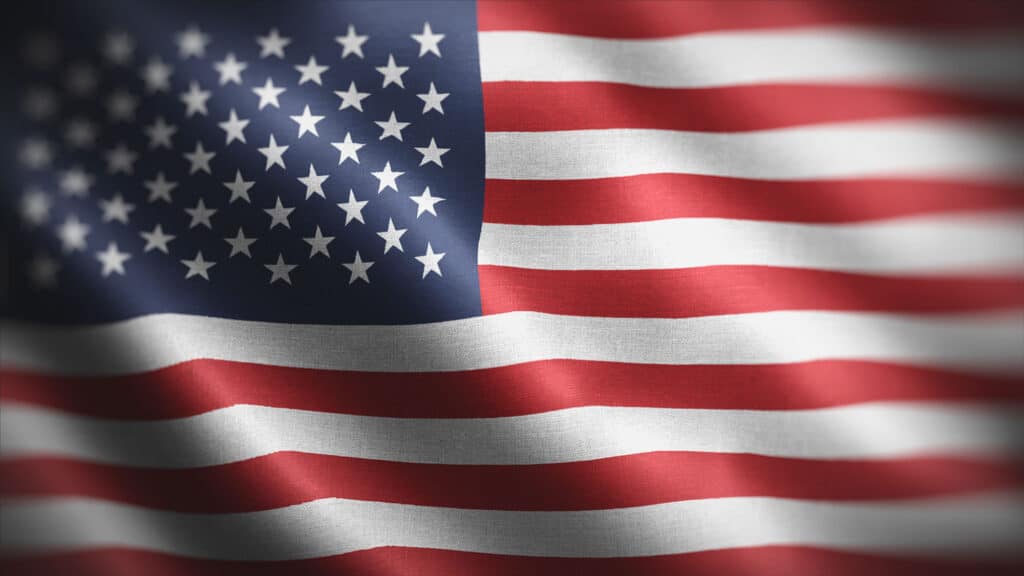
©Tatohra/Shutterstock.com
The flag of the United States has seven red vertical stripes and six white stripes making this flag red white and blue flag. Red signifies the toughness that brought the Americans thus far, while white represents the purity and innocence of its people. At the top left corner is a blue field embedded with 50 stars, representing each state in the country.
Iceland
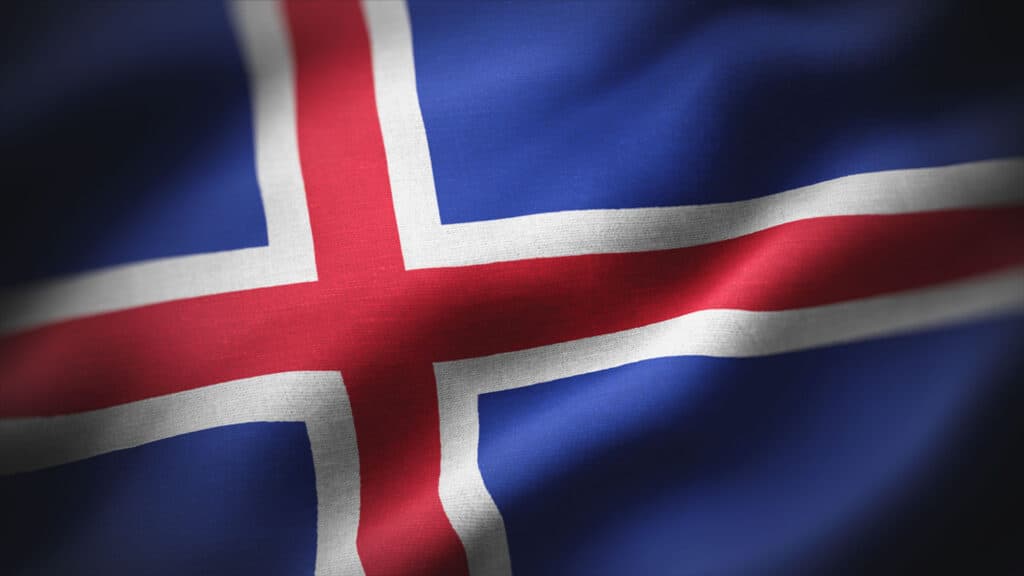
©Tatohra/Shutterstock.com
The flag of Iceland is a visual representation of the unusual landscape the country offers. On Iceland’s flag, red depicts volcanic fires, blue depicts the mountains from which these volcanoes erupt, and white represents the ice and snow that covers it all.
New Zealand
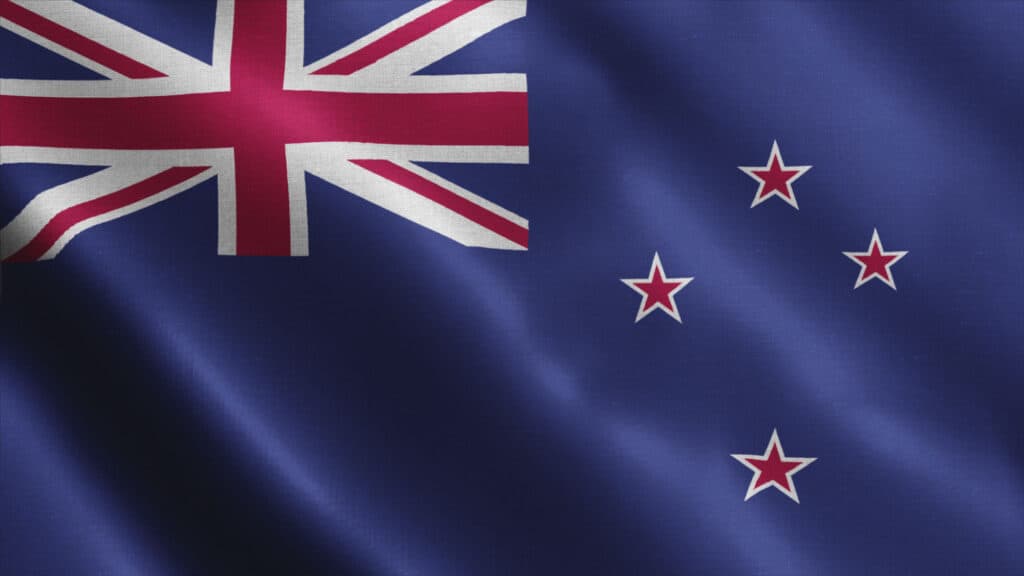
©Tatohra/Shutterstock.com
New Zealand’s flag is derived from its ancestry and its location, relative to the South Pacific Ocean. The country was once under Britain’s rule. They honor this association by placing Britain’s Union Jack in the corner of their flag.
Croatia
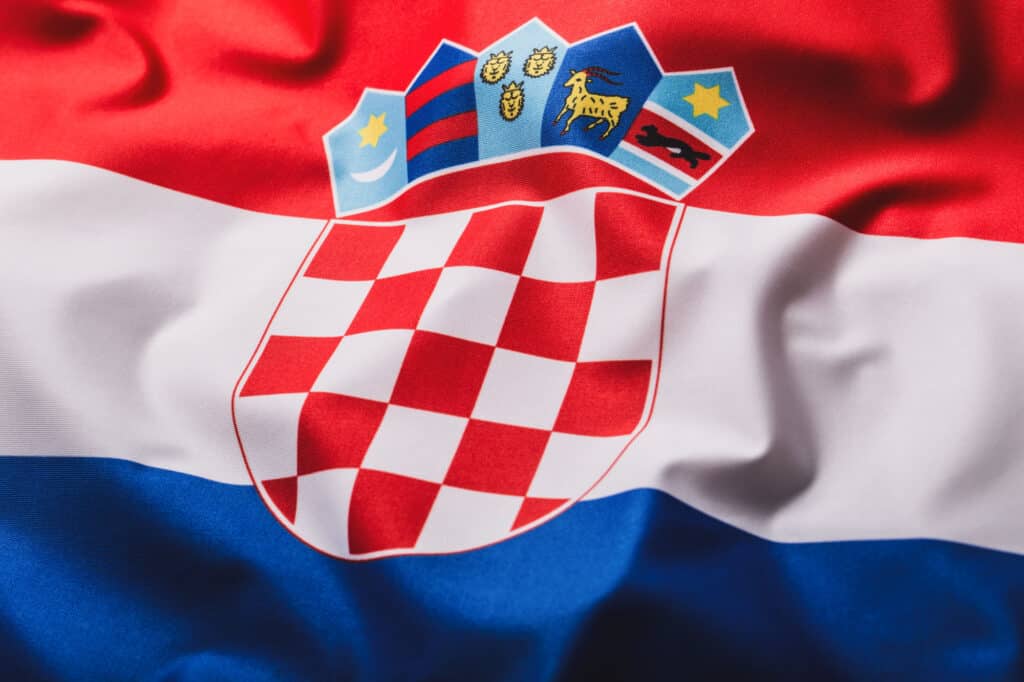
©Marian Weyo/Shutterstock.com
Croatia sought relief from Hungarian rule thrice, starting in 1848. Although they were not successful, it was the first time the movement hoisted a flag. It was a red, white, and blue flag, symbolizing their potential alliance with Russia.
In 1941, they took another shot at independence, this time adding the red and white checkered shield to the flag. Finally, in 1990, Croatia gained independence. This historic victory will forever be commemorated by the yellow-bordered red star on the nation’s flag.
Laos
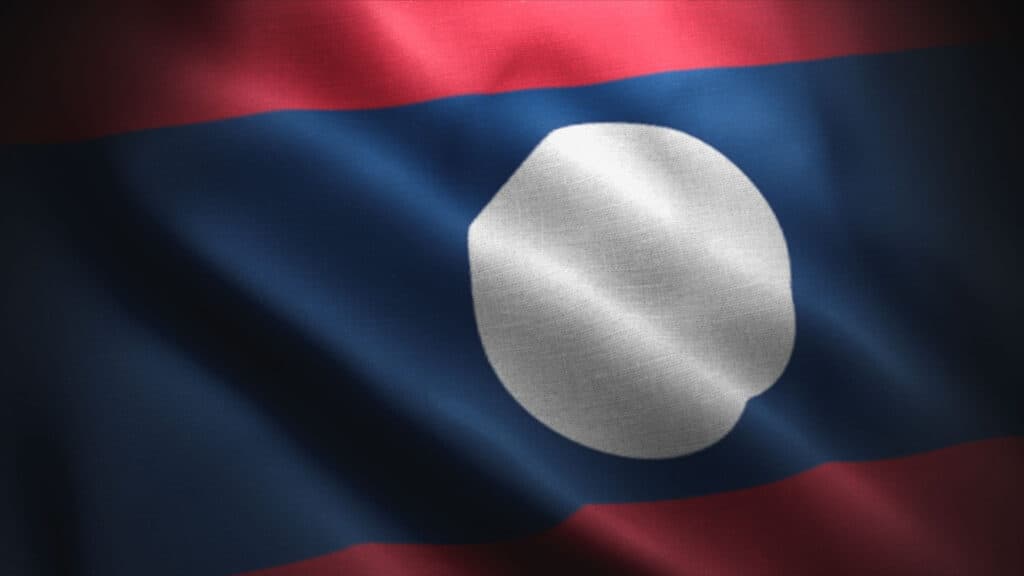
©Tatohra/Shutterstock.com
This flag has a dramatic interpretation. One blue stripe lies between two red stripes, signifying the blood shed by the people of Laos in their quest for freedom and liberation. The blue stripe represents the Mekong River, a river of great economic and historical importance. Finally, the white circle represents the full moon, signifying wholeness.
We may infer from this flag that the people of Laos have, and will continue to overcome great challenges to stay together.
Nepal
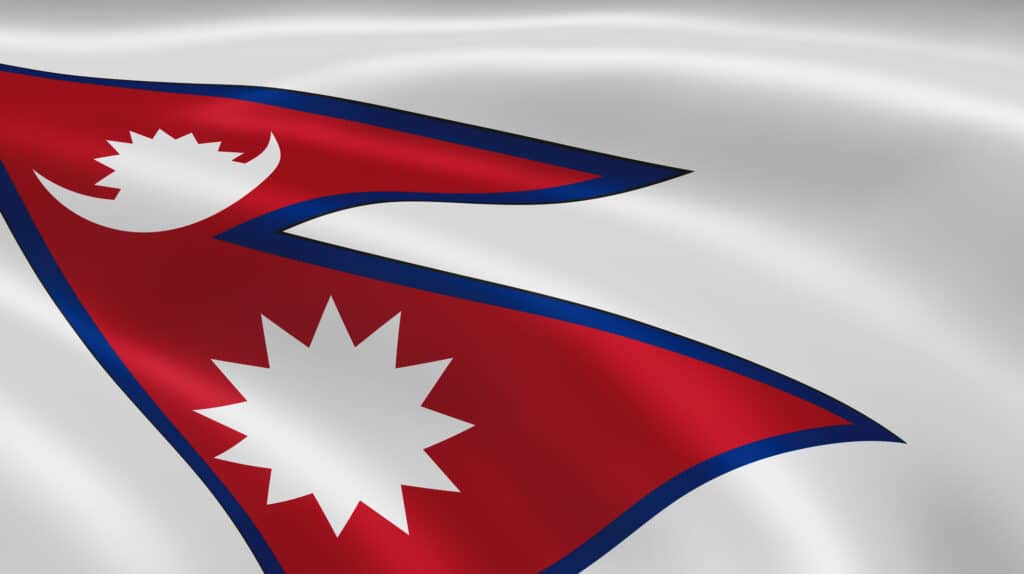
©Nuno Andre/Shutterstock.com
Nepal’s flag is striking. Its jagged edge symbolizes the Himalayan mountains, as well as the two most prominent religions in the country: Hinduism and Buddhism.
Within those triangles are the sun and moon, pointing at their desire to live forever, and a fierce will to survive.
The outline of the flag is blue, representing purity. The base color of the flag is crimson, symbolizing vitality and bravery.
Czech Republic

©iStock.com/NatanaelGinting
The Czech Republic, which was cut out of the Austro-Hungarian Republic after World World I, has changed its flag multiple times since 1918.
Its first flag was identical to the Polish flag; a slab of white over a slab of red. Two years later, an isosceles triangle in the blue Slovakian color was added to signify the unity between Bohemia and Slovakia.
France
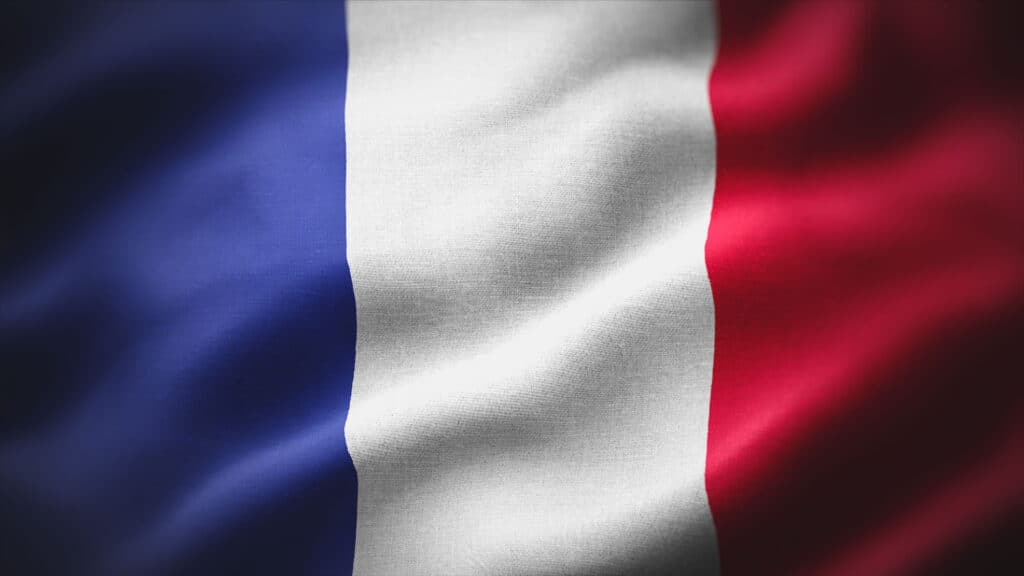
©Tatohra/Shutterstock.com
The red, white, and blue colors on the French flag signify democracy, monarchy, religion, and nobility. After the French Revolution in 1794, the flag became a symbol of modernization, liberty, and brotherhood.
The red and blue colors represent the city of Paris, while the white represents the king and his monarchy.
Costa Rica
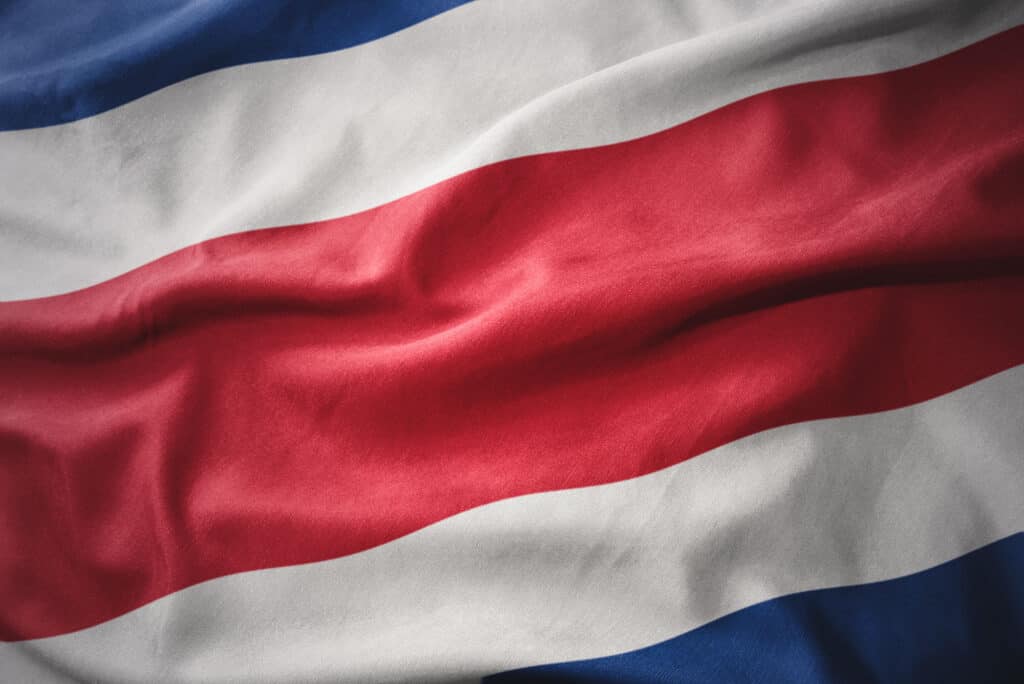
©esfera/Shutterstock.com
At the top and bottom of the Costa Rican flag are two stripes of blue. They signify the sky and the openness and receptivity of its people. This vivid blue color marks Costa Rica as a land of opportunities and ideas.
The white stripe indicates wisdom and purity, while the red in the middle represents the blood shed by patriots. Despite the nation’s hardships and wars, its flag represents the warmth and hospitality of the Costa Rican people.
Slovakia
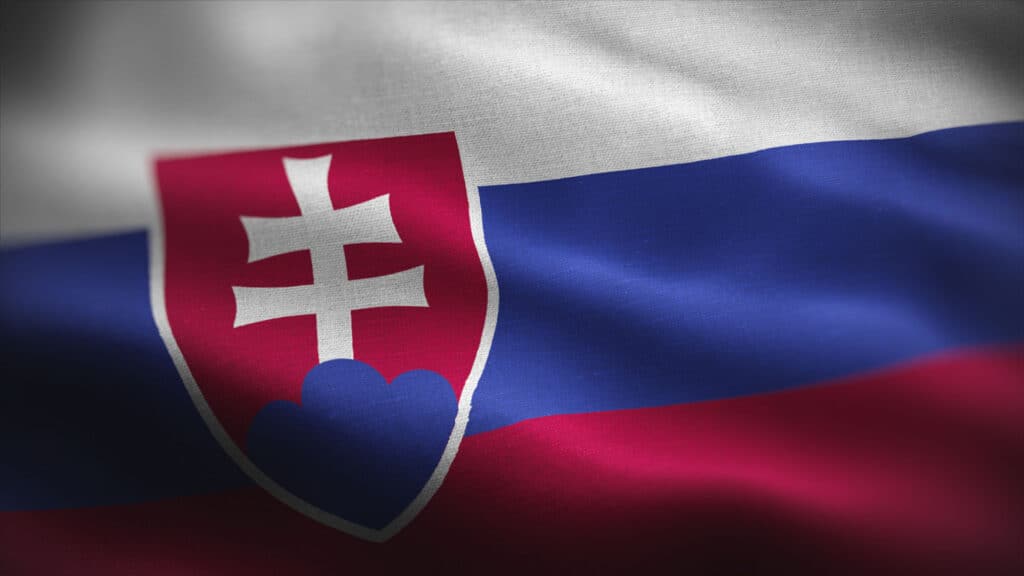
©Tatohra/Shutterstock.com
Like other Slavic nations, Slovakia’s flag features horizontal red, white and blue stripes. Russia, Croatia, the Czech Republic, and Slovakia share a common ancestry.
Slovakia’s flag has its coat of arms in its center. At the bottom of the coat of arms are three bumps, which signify three important mountain ranges; Matra, Tatra, and Fatra. Interestingly, Matra is a mountain found in Hungary, not Slovakia. Nonetheless, the Slovakian people bear strong ties to these historic landscapes.
On top of these three bumps is a double cross, symbolizing Christianity, the most popular religion in the region.
Norway

©Tatohra/Shutterstock.com
The Norwegian flag finds its origin in the official flag of another country, Denmark. At the time it was designed, Norway and Denmark had formed a solid alliance. The colors chosen for the flag also depict the country’s Scandinavian origins.
The flag of Norway was designed in 1821 by Fredrick Meltzer. It represents freedom and Christianity. The red and blue colours were chosen to allude to the country’s attachments to Denmark and Sweden respectively.
Paraguay
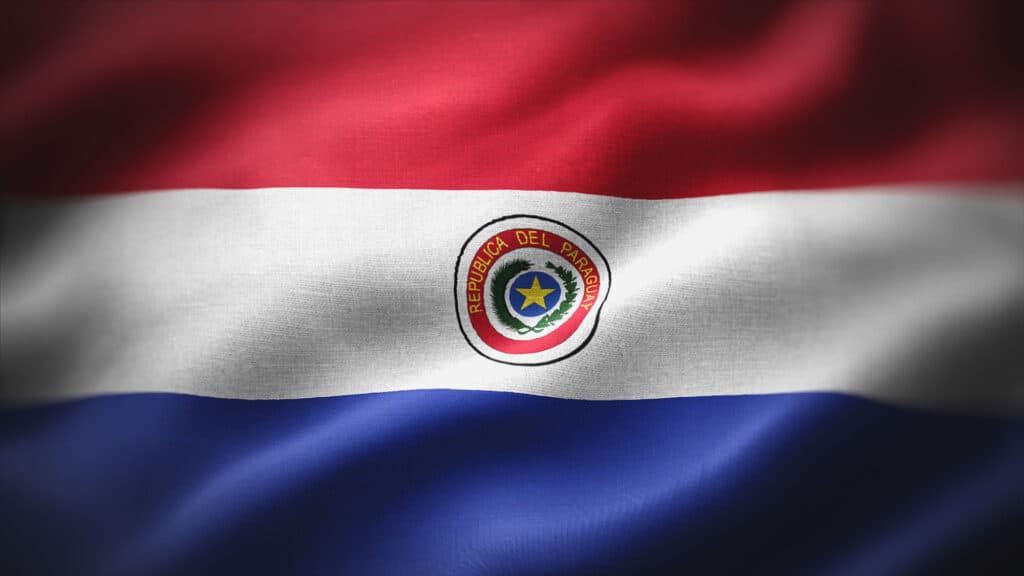
©Tatohra/Shutterstock.com
The flag of Paraguay, first hoisted in 1842, was inspired by the French flag. The colors red, blue, and white represent liberty and independence.
The red band comes first; it denotes patriotism, equality, courage, and justice. The white band lies in the middle, signifying unity, peace, and steadfastness. The last band stands for sharpness, reality, and liberty. In the middle of the flag is an emblem with a palm frond and an olive branch, signifying peace and dignity.
Cambodia
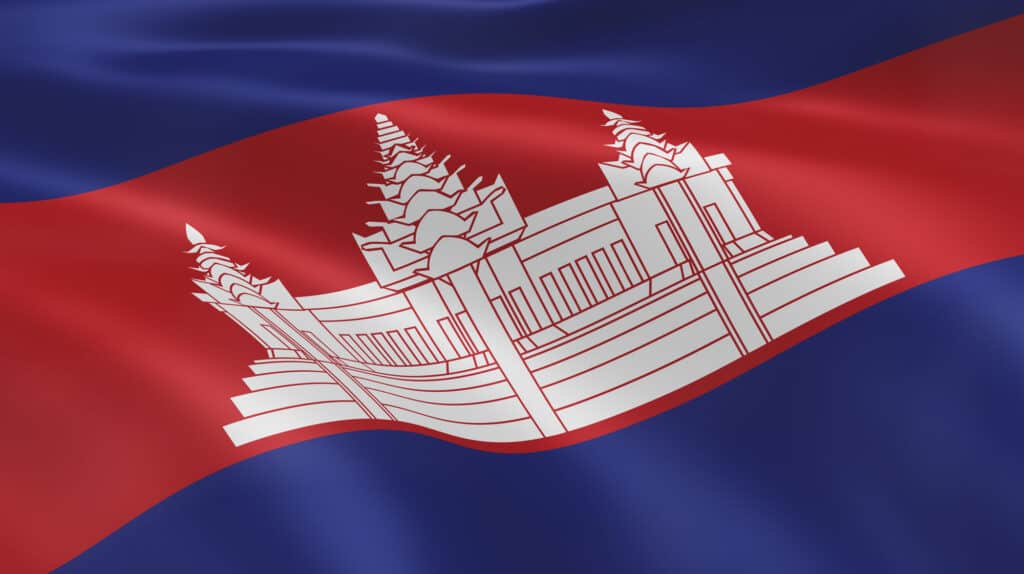
©Nuno Andre/Shutterstock.com
In the center of the tricolor Cambodian flag is an image of the Angkor Wat, an ancient Buddhist temple in the country. The colors of the Cambodian flag represent bravery and liberation, cooperation and brotherhood. The flag as a whole ties three elements together: the king, the people, and their religion.
North Korea
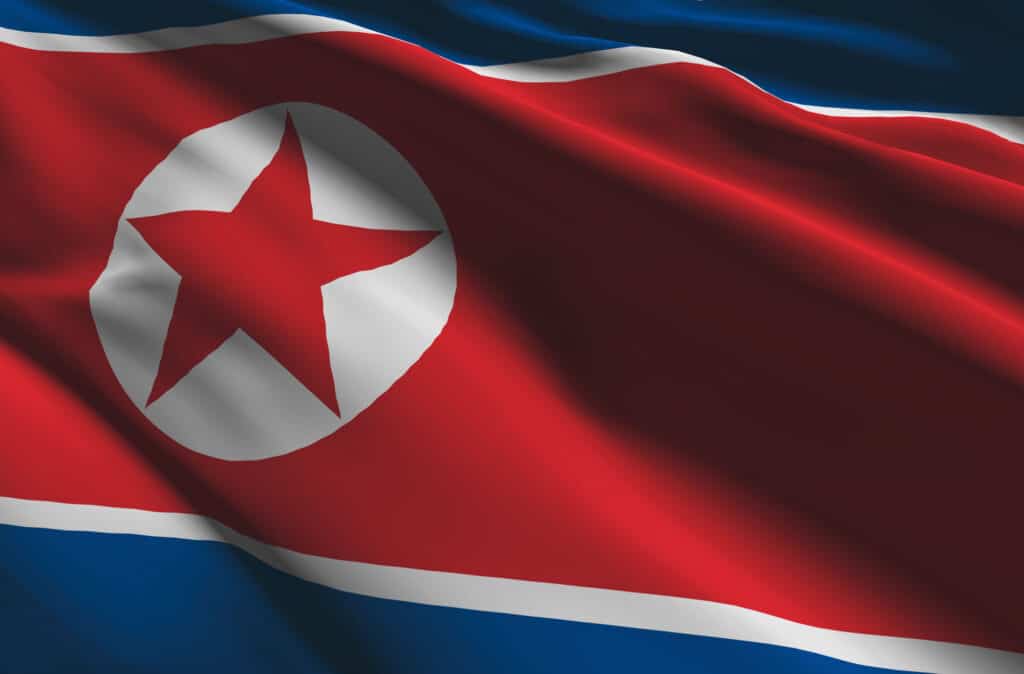
©dicogm/Shutterstock.com
The North Korean flag shares some similarities with that of Korea before the nation split into its northern and southern regions. The North Korean flag has white, the official color of Korea. The vibrant red on this flag signifies determination, revolution, and socialism. The blue stripes signify peace and friendship.
The North Korean flag has an emblem placed off center, a star that represents the country’s commitment to communism.
United Kingdom

©MP_Foto/Shutterstock.com
The Union Jack, the official flag of the United Kingdom, represents the amalgamation of four regions: England, Wales, Scotland, and Northern Ireland. The flag is made of components from each of these regions.
The red cross of St. George of England, the white cross of St. Patrick of Ireland, and the saltire (cross) of St. Andrew of Scotland. At the time of its design, Wales was not yet a part of the Union.
The Union Jack or Union Flag was first paraded in 1802. The blue field signifies vigilance, loyalty, justice, and perseverance. The white lines speak of peace and honesty. Lastly, the red stripes are a reminder of the UK’s military strength and valor.
Other Countries With Red, Blue, and White Flags:
Australia
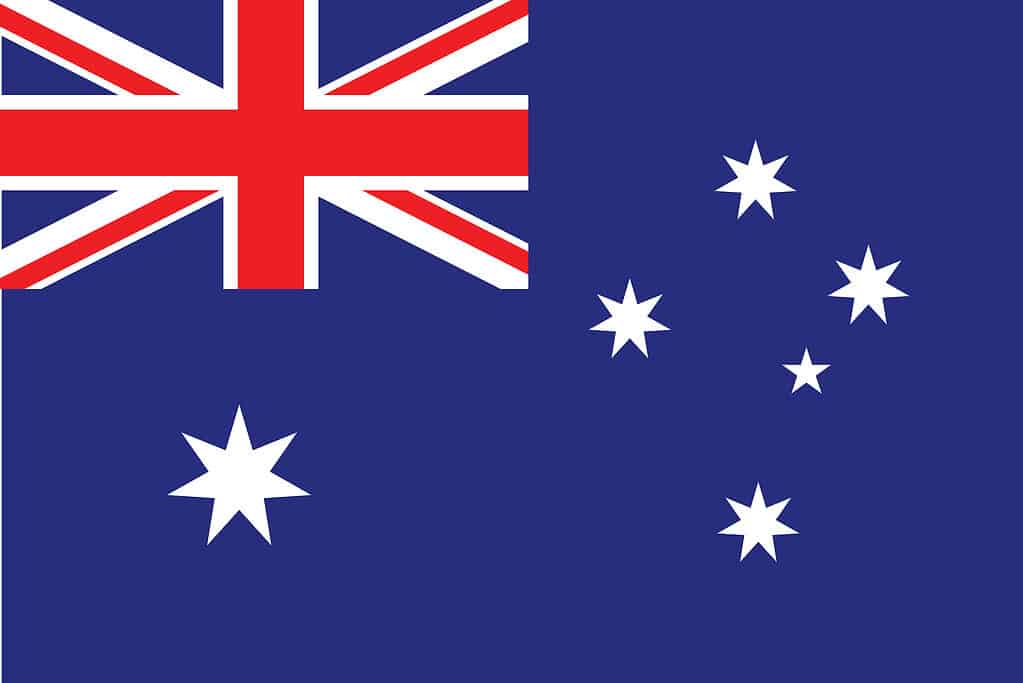
The flag of Australia was designed in 1901.
©iStock.com/Ardani Saputro
The first Prime Minister of Australia, Rt Hon Sir Edmund Barton declared an international challenge in 1901 during the federation to design the best flag for the new Commonwealth of Australia. In fact, there were exactly 32,823 submissions, five of which were nearly identical in design. These flag entries were all awarded first prize and became the flag of Australia.
Luxembourg
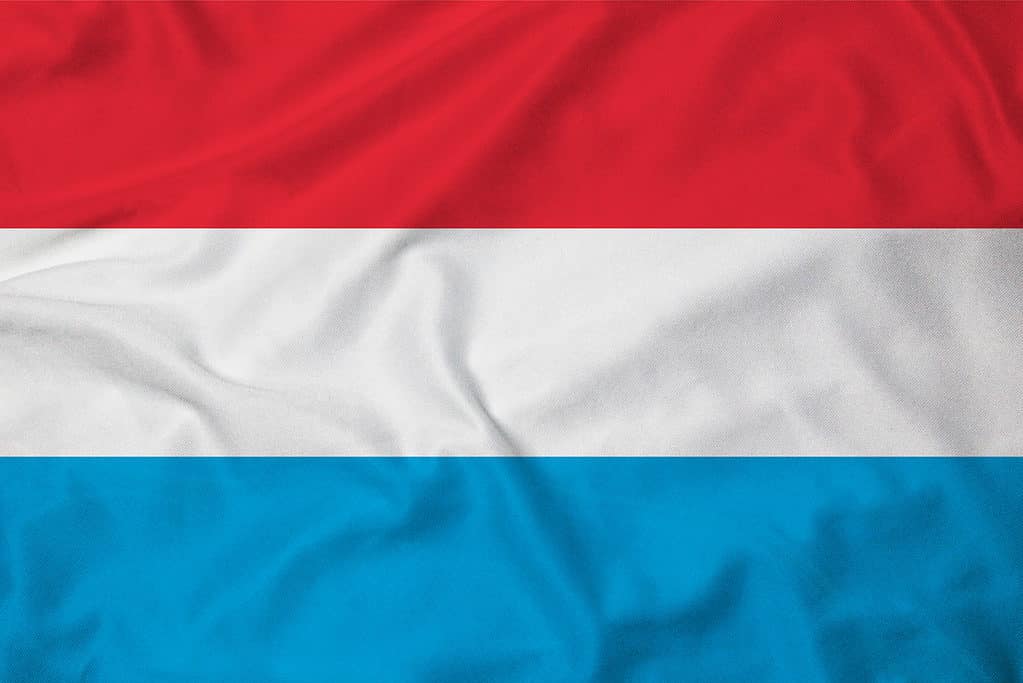
The Luxembourg’s flag was put into place on June 12, 1845.
©iStock.com/Royal Graphics
After the Napoleonic Wars, the modern country of Luxembourg had been solely a part of the Holy Roman Empire. The region became a separate country under Netherlands’ authoritative protection in 1354 by Emperor Charles IV. The national colors came from the ducal coat of arms. The horizontal tricolor was put into place on June 12th, 1845.
Serbia
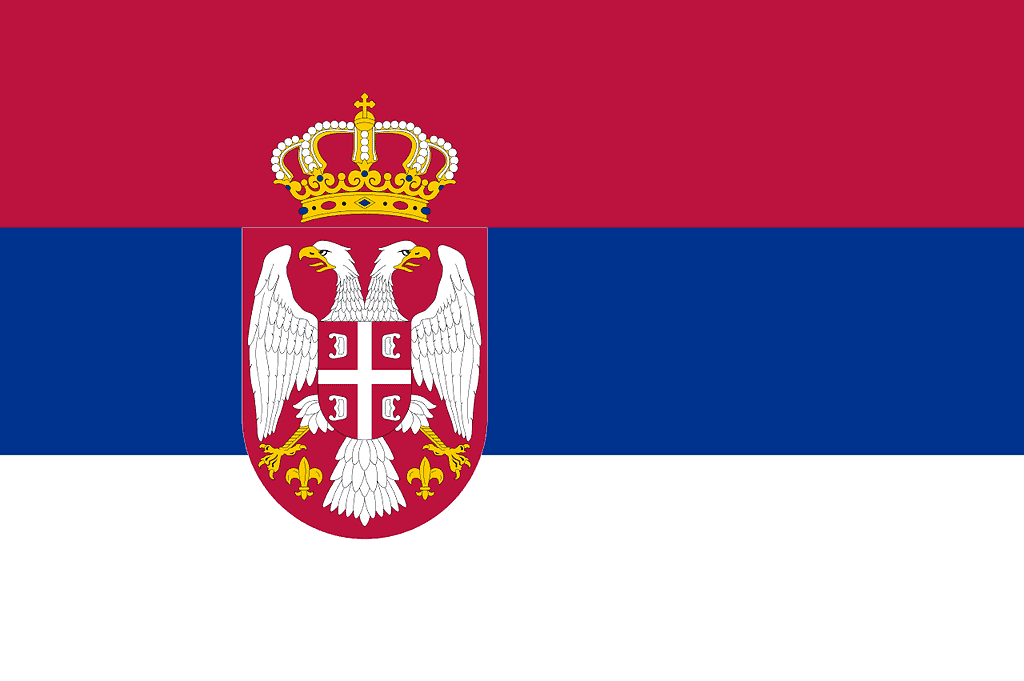
The Flag of Serbia was redesigned a few times, but the original design can be dated back to 1339.
©National Assembly of the Republic of Serbia (Serbian Parliament) / Public domain – License
The first design of the Serbian flag can be dated back to 1339. It was found on a map by Angelio Dulcert. During that time, King Stefan Dusan controlled Serbia. The original flag had a white background with a red two-headed eagle. The design reflected a historical connection between Serbia and the Byzantine Empire. The current version of the flag was instated in 2004 and went through a revision again in 2010.
Fiji

The Kingdom of Fiji was renamed and given a new flag design in 1871.
©MP_Foto/Shutterstock.com
The Kingdom of Fiji was originally called The Kingdom of Lau back in 1869. At that time, the region introduced a new, redesigned flag that had horizontal white and red stripes with a red cross in the top corner. In 1871, the Kingdom was renamed to Fiji which also came an updated version of the flag.
Additionally, in 1874, Fiji became part of the British colonies which then included the Union Flag of Great Britain on the existing design.
Furthermore, the country flag received a British Blue Ensign that had a white disc with the National Coat of Arms.
Liberia
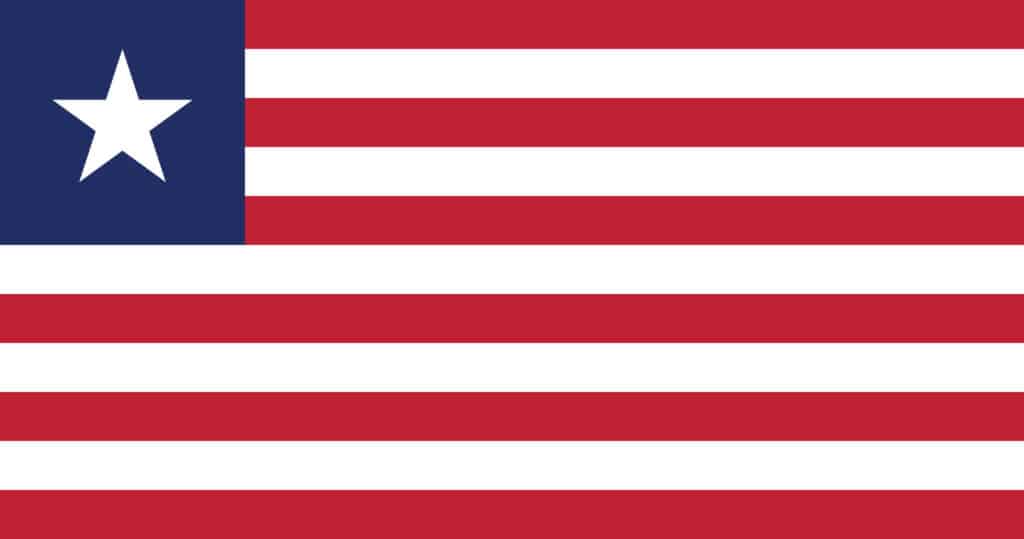
The 11 stripes represent each of the 11 men who signed Liberia’s Declaration of Independence.
©Gil C/Shutterstock.com
Liberia’s first flag was shown to the public on April 9th, 1827. It appears very similar to the United States of America flag. This is partly due to Liberia being a colony of the U.S. during that time. The flag has 13 horizontal white and red stripes with a blue square on the left-hand side. The red stands for courage, and the white stands for national confidence.
Slovenia
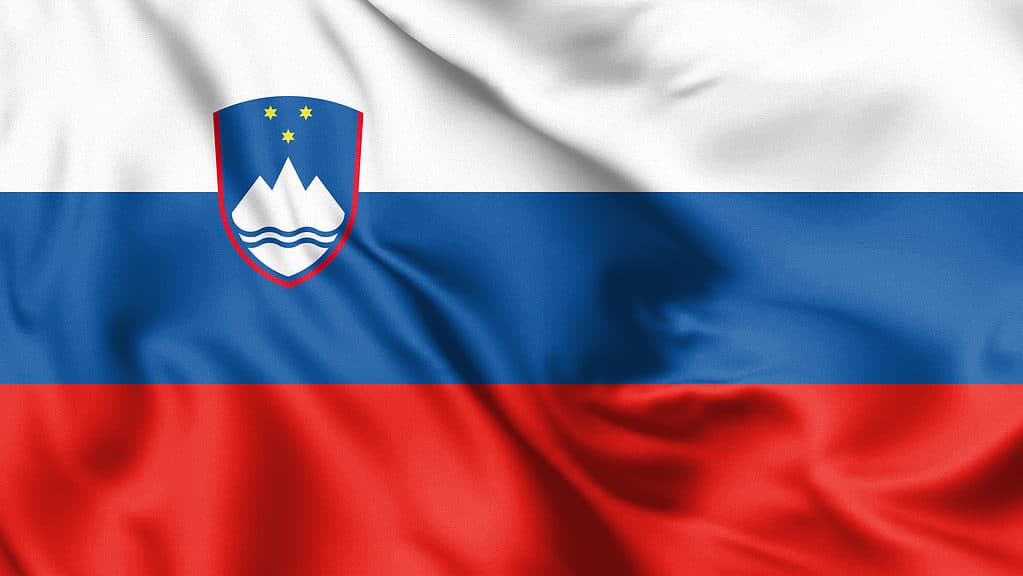
The first Flag of Slovenia was designed in 1848.
©J_UK/Shutterstock.com
The flag of Slovenia was designed by Slovenian students in Vienna. They put up the very first national flag in March of 1848. This time in history was filled with revolutionary unrest which became a turning point in the country’s history. On April 7th, 1848, the flag was flown on the Zlata Riba Inn building at Wolfova Ulica. It was lifted by eight patriotic students who had similar views for the future of the region.
Panama
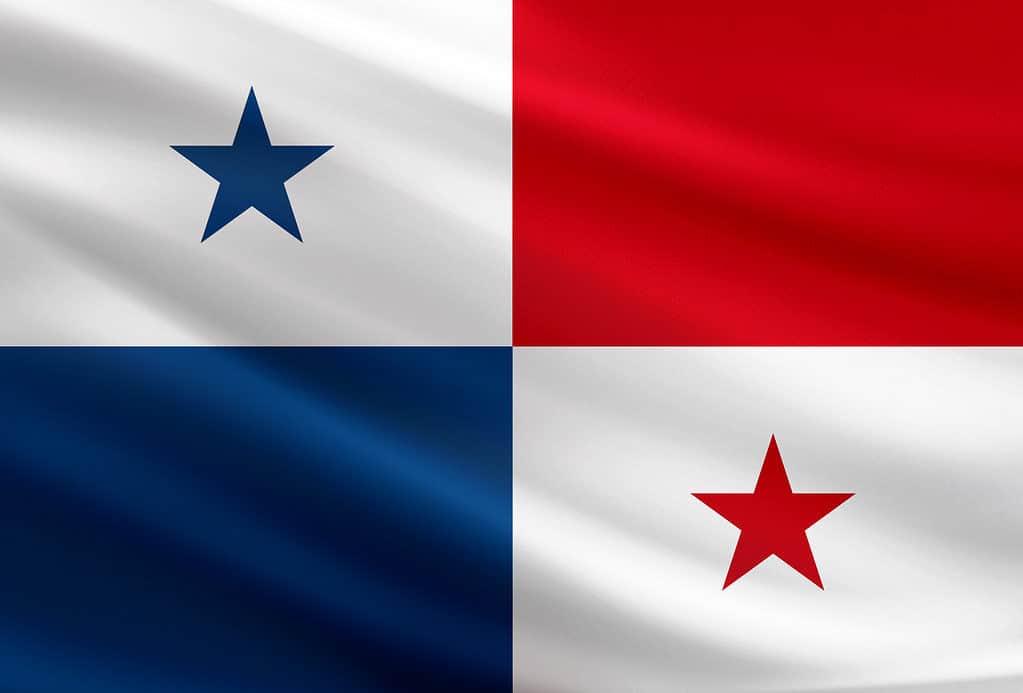
The Panama flag was designed in 1903 by a member of the separatist movement.
©Osman Bugra Nuvasil/Shutterstock.com
The first flag of Panama was designed in 1903. There are 13 stripes of red, blue, and yellow. There are two gold suns. This depiction represents North and South America.
Furthermore, a member of the separatist movement, María Ossa de Amador created Panama’s first flag. White stands for peace in the new nation, blue represents the conservative party, and red represents the liberal party.
Netherlands

The first Flag of the Netherlands (Dutch flag) was designed in 1572.
©iStock.com/flowgraph
The Dutch flag was first designed in 1572. At the time, it was called the “Prince’s Flag”. It was orange, white, and blue. Orange represented the principality while the other colors represented the principality’s clothing color choices. In the 17th century, orange was replaced with red.
During that time, the Dutch began using a similar color flag. This Dutch flag later inspired the vertically striped French Tricolor after the French Revolution in 1789.
Russia
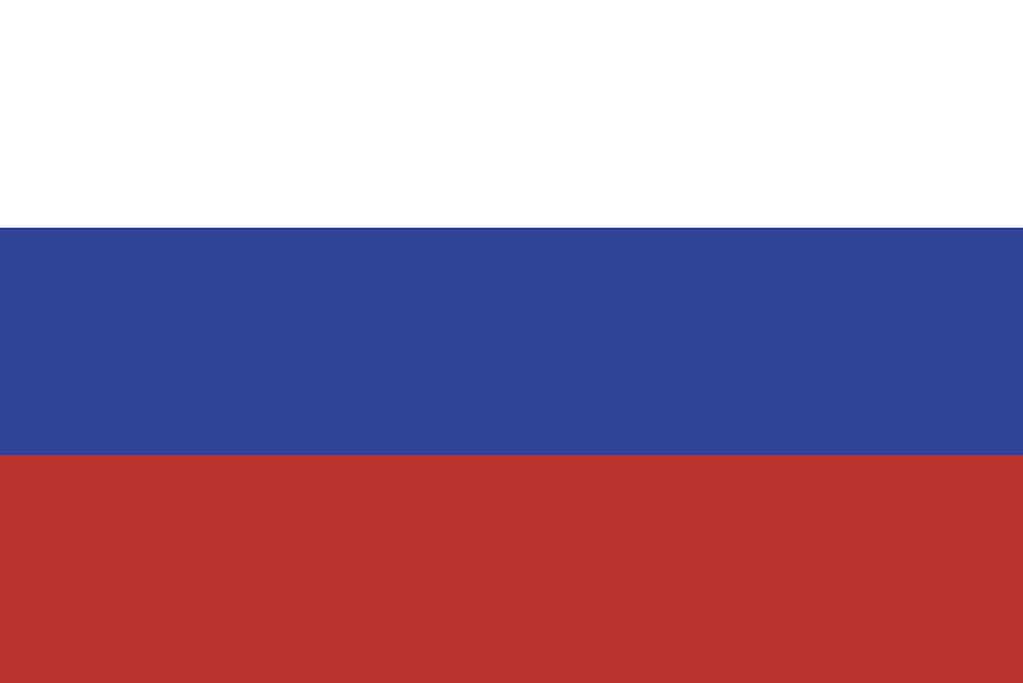
The Russian flag was first waved on January 20th, 1705.
©iStock.com/mehmetbuma
The first person to wave the first Russian flag was Peter The Great on January 20th, 1705. He ordered Russian sea ships in Moscow, Volga, and Dvina rivers to hoist it as the trading flag. However, back then the lower red stripe actually represented Earth. The blue one represents the sky, and the upper white stripe represented the world ruled by God.
Furthermore, during the rule of Alexander III of Russia, the official interpretation was changed to the white color for notability, blue for faithfulness, and red for courage.
Dominican Republic

The first flag of the Dominican Republic was designed in 1838.
©N. Vector Design/Shutterstock.com
The first flag of the Dominican Republic was designed in 1838 by Juan Pablo Duarte. He is often referred to as the father of the country. The first design was approved by a group called Los Trinitarios during that same year. Furthermore, this revolutionary group was known as La Trinitaria.
The group highlighted and focused on Christian roots by including a white cross to the blue flag. The revolution began on February 27th, 1844 and the flag was raised the following day.
Chile
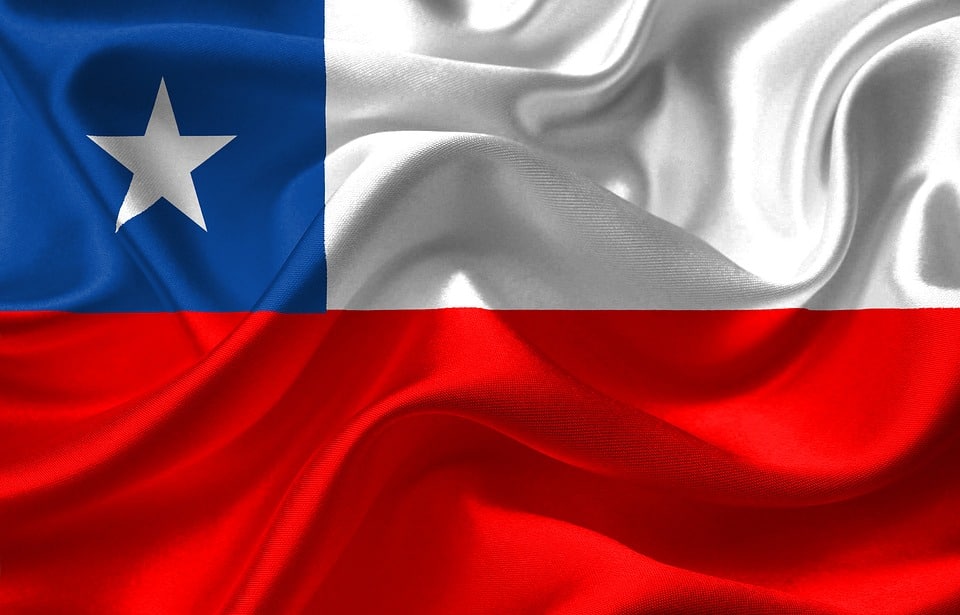
The first Flag of Chile was designed in 1817.
©AUTORES DE GOOGLE CC-BY-SA-4.0 https://commons.wikimedia.org/wiki/Category:CC-BY-SA-4.0 – License
During the Chile War of Independence against Spain in 1817, José Ignacio Zenteno, a Chilean Minister was believed to have come up with the design for the first flag of Chile. Additionally, there is significant historical debate about who exactly designed the first flag.
While some believe it was José Ignacio Zenteno, many believe it was Antonio Arcos, a soldier born in Spain.
Furthermore, there is a third point of view that Gregorio de Andía y Varela, a sculptor, designed the flag.
Cuba
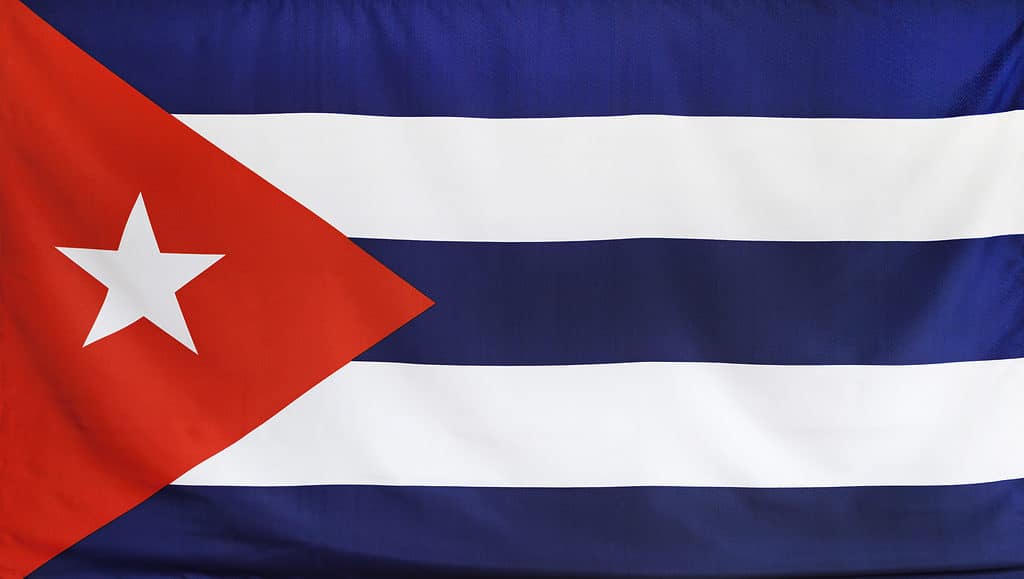
The flag of Cuba was first designed in 1849.
©Sehenswerk/Shutterstock.com
A man by the name of Narciso López who was a pro-independence exile living in New York City at the time, designed and created the first Cuban flag in 1849. During that time, a committee of other exiles in New York designed the Puerto Rican flag as well during the mid-1890s.
In fact, the three blue stripes in the Cuban flag represent divisions between the Spaniards in Cuba. White represents pure intentions and red stands for the bloodshed during their fight for independence.
Samoa

The first flag of Samoa was designed on May 26th, 1948.
©Mehaniq/Shutterstock.com
In 1948, the islands of Samoa introduced a local flag for the region It was actually inspired by the New Sealand flag. It had red, white, and blue colors with the Southern Cross constellation. The first design was created on May 26th, 1948. A few years later on February 24th, 1949 the firth star was added to the flag.
Thailand
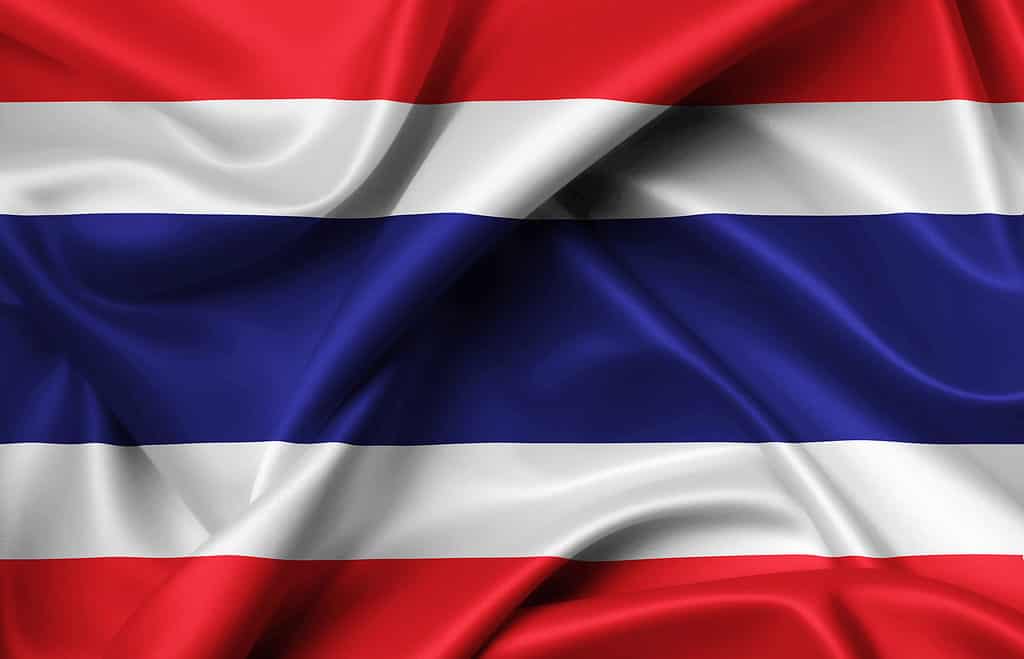
The first Flag of Thailand was designed in 1855.
©IznoDesign/Shutterstock.com
The very first Thai flag was designed in 1855 by King Mongkut (Rama IV). At the time it had a red background with a white elephant that represented the country’s national animal. Over time, the flag has transformed. The red, white, and blue symbolized the monarchy which was considered auspicious colors during the reign of Rama VI.
In the modern era, red symbolizes bloodshed for freedom, white is for religious laws and the purity of Buddhism, and blue stands for the institution of royalty that helps guide the nation.
Summary of 29 Different Countries with Red, White, and Blue Flags
Here’s a recap of 29 countries that proudly fly flags featuring the colors red, white, and blue:
| Number | Country |
|---|---|
| 1 | Australia |
| 2 | Cambodia |
| 3 | Chile |
| 4 | Costa Rica |
| 5 | Croatia |
| 6 | Cuba |
| 7 | Czech Republic |
| 8 | Dominican Republic |
| 9 | Fiji |
| 10 | France |
| 11 | Iceland |
| 12 | Laos |
| 13 | Liberia |
| 14 | Luxembourg |
| 15 | Nepal |
| 16 | Netherlands |
| 17 | New Zealand |
| 18 | North Korea |
| 19 | Norway |
| 20 | Panama |
| 21 | Paraguay |
| 22 | Russia |
| 23 | Samoa |
| 24 | Serbia |
| 25 | Slovakia |
| 26 | Slovenia |
| 27 | Thailand |
| 28 | United Kingdom |
| 29 | United States |
Conclusion
Red is the most common flag color, and it is not just because of its vibrancy. Many countries use red to indicate a period of struggle. Red pairs well with white because the latter signifies peace and unity. Blue often represents liberation, patriotism, and freedom. In addition to the powerful symbolism of these colors, the way that they complement and contrast visually makes the trio the perfect combination for many national flags.
The photo featured at the top of this post is © Tatohra/Shutterstock.com
Sources
- Ferdinand Bada , Available here: https://www.worldatlas.com/articles/countries-with-red-white-and-blue-flags.html
- 2022 World Population Review, Available here: https://worldpopulationreview.com/country-rankings/countries-with-red-white-and-blue-flags
- Whitney Smith, Available here: https://www.britannica.com/topic/flag-of-Croatia
- Željko Heimer, Jaroslav Martykán, and Kryštof Huk, Available here: http://www.loeser.us/flags/czech.html
- Patriot Wood, Available here: https://www.patriotwood.com/blogs/news/19048961-5-facts-about-slovakia-s-flag
FAQs (Frequently Asked Questions)
What country has a red, blue and white flag with a star?
The flag of Chile and Cuba both have one star in their canton. The flag of Cuba has blue and white stripes, with a red flag with one star at its hoist. The flag of Chile is white on red, with a blue square containing one star at its canton.
What country has a flag with only one color?
Libya is the only country with a single-coloured flag. Libya’s flag was solid green, signifying Ghadafi’s political views. However, the plain green flag is no longer in use. In 2011, Libya adopted a red, black and green flag with a white crescent and star in its middle.
What countries have white and blue flags?
Some well-known countries with blue and white flags include Argentina, El Salvador, Finland, and Greece.
What countries have red and white flags?
Countries with red and white flag include Japan, Canada, Qatar, and Lebanon to mention a few.
Thank you for reading! Have some feedback for us? Contact the AZ Animals editorial team.






